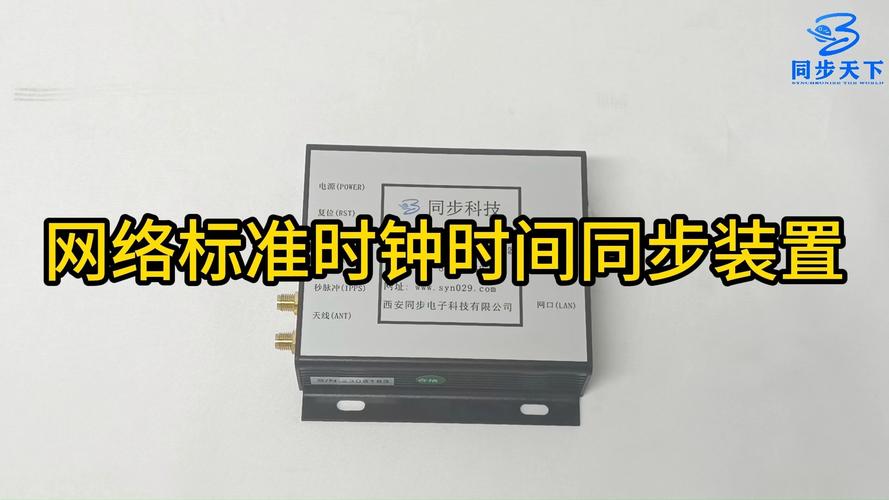一、802.1CM时钟同步要求在最新版的标准草案802.1-1CM–d2-2中,6.4.1详细讲述了时钟同步的要求,本章节做一简单解析。If the bridged network provides time nchronization, then the following timing accuracy requirements apply. Four different Categories are defined and distinguished by the eCPRI transport network requirements specification [B7] with respect to time synchronization requirements; they are described in 6.4.1.1, 6.4.1.2, 6.4.1.3, and 6.4.1.4. Different timing Categories are applicable for different 3GPP features; an example is given for each Category.如果桥接网络提供时间同步,则应当满足以下的时序精度要求。关于时间同步要求,eCPRI传输网络需求规范[B7]定义和区分了四个不同的类别;它们在6.4.1.1、6.4.1.2、6.4.1.3和6.4.1.4中进行了描述。不同的时序类别适用于不同的3GPP特征;每一个类别都给出了相应的示例进行说明。Based on ITU-T G.8271.1, synchronization accuracy is specified here using maximum absolute Time Error (max|TE|) values when the requirement is expressed with respect to an internationally recognized time reference (e.g., the Temps Atomique International (TAI)) or maximum absolute relative Time Error (max|TE|relative) values when the requirement is expressed between two reference points. The subclauses contained herein define the requirements at the input of the eRE/RE. Time errors introduced by the link connected to the eRE/RE are not part of the budget for eRE/RE internal Time Error (|TEeRE/RE|) but are included in the max|TE| budget. The different time errors are illustrated in Figure 6-3.基于ITU-T G.8271.1,当要求被表达为关于国际公认的时间基准(例如,Temps Atomique International(TAI))时候,使用最大绝对时间误差(max|TE|)值来指定同步精度;当要求是基于两个参考点时,使用最大绝对相对时间误差来指定同步精度。这里所包含的子句定义了Er/RE输入的要求。由连接到eRE/RE的链接引入的时间错误不是eRE/RE内部时间错误(|TE eRE/RE|)的预算的一部分,而是包含在最大TE|预算中。图6-3中示出了不同的时间误差。 The following interface condition cases are distinguished: — Case 1: The Telecom Time Slave Clock (T-TSC) is integrated in eRE/RE, i.e., PTP termination is in eRE/REs. Thus, the eRE/RE has two time budgets: eRE/RE internal Time Error and integrated T-TSC Time Error. Case 1 corresponds to deployment case 1 of Figure 7-1 of ITU-T G.8271.1 (illustrated in Figure 6-4). Case 1 includes two sub-cases: 1) Case 1.1: The integrated T-TSC requirements are the same as that of a standalone T-TSC Class B as specified in ITU-T G.8273.2. 2) Case 1.2: Enhanced integrated T-TSC requirements assume a total maximum absolute time error of 15 ns. — Case 2: The T-TSC is not integrated in eRE/REs, i.e., PTP termination is in T-TSC at the edge port, and the phase/time reference is delivered from the T-TSC to the co-located eRE/REs via a phase/time synchronization distribution interface (e.g., 1 PPS and Time of Day). Case 2 corresponds to deployment case 2 of Figure 7-1 of ITU-T G.8271.1 (illustrated in Figure 6-4).不同的接口在时钟同步要求上有不同的要求,下面做简单区分:情形一:电信时间从时钟(T-TSC)集成在eRE/RE中,即PTP终端集成在eRE/RE中。因此,eRE/RE具有两个时间预算:eRE/RE内部时间错误和集成T-TSC时间错误。案例1对应ITU-T G.827 1.1的图7-1的部署案例1。(图4-4所示)。案例1包括两个子案例:1)案例1.1:集成T-TSC要求与ITU-T G.827 3.2中规定的独立T-TSC类B相同。2)案例1.2:增强的集成T-TSC要求假定总最大绝对时间误差为15纳秒。 案例1:情形二: T-TSC没有集成在eRE/RE中,即PTP终止在边缘端口的T-TSC中,并且相位/时间基准通过相位/时间同步分配接口(例如,1PPS和日时)从T-TSC传递到共处的eRE/RE。案例2对应于ITU-T G.827 1.1(图4-4所示)的图7-1的部署实例2。According to the eCPRI transport network requirements specification [B7], the budget for eRE/RE internal Time Error (|TEeRE/RE|) depends on the Case and the Category as shown in Table 1. 根据eCPRI传输网络需求规范[B7],eRE/RE内部时间错误(|TEeRE/RE|)的预算取决于情况和表1中所示的类别。 Category A+ (6.4.1.1), Category A (6.4.1.2), and Category B (6.4.1.3) requirements are expressed as relative requirements between two points at the edge of the bridged network (instead of relative to a common clock reference). Category C (6.4.1.4) requirements are expressed as an absolute requirement at the edge of the bridged network as in ITU-T G.8271.1. Category C (6.4.1.4) network limits are not derived from 3GPP requirements, but network limits specified for reference point C in chapter 7.3 of ITU-T G.8271.1 are used (see reference point C in Figure 6-4). Considerations on how to measure network limits on a packet-based interface (e.g., PTP) are provided in Appendix III of ITU-T G.8271.1. The ITU-T has defined individual clock specifications for time distribution to address Category C (6.4.1.4) requirements. Their use for other Categories is discussed in 7.4. NOTE 2—eRE/RE clock specification is in scope of the specifications of CPRI Cooperation; it is out of the scope of ITU-T and out of the scope of this document. The budget of the bridged network is important for this document. NOTE 3—ITU-T recommendations are under development that are expected to support the requirements of Case 1.2 in Categories A and B, and Case 2 in Categories A+ and A.A类(6.4.1.1),A类(6.4.1.2)和B类(6.4.1.3)要求表示为桥接网络边缘两点之间的相对要求(而不是相对于公共时钟参考)。 C类(6.4.1.4)要求表示为在桥接网络边缘的绝对要求,如ITU-T G.8271.1所述。 C类(6.4.1.4)网络限制并非源自3GPP要求,但使用了ITU-T G.8271.1第7.3章中为参考点C规定的网络限制(见图6-4中的参考点C)。 有关如何测量基于分组的接口(例如,PTP)的网络限制的考虑在ITU-T G.8271.1的附录III中提供。 ITU-T已经为时间分配定义了单独的时钟规范,以满足C类(6.4.1.4)的要求。 它们用于其他类别的用法在7.4中讨论。 注2 - eRE / RE时钟规范属于CPRI合作规范的范围; 它超出了ITU-T的范围,超出了本文档的范围。 桥接网络的预算对于本文档非常重要。 注3 - ITU-T建议正在制定中,预计将支持A类和B类案例1.2以及A +和A类案例2的要求。FLR requirement for PTP is not specified by this standard. Requirements on PTP are described in IEEE Std 1588 and requirements for the PTP telecom profile for phase/time synchronization with full timing support from the network in ITU-T G.8275.1. These requirements do not include explicit requirements on PTP FLR; however, they provide indications on expected FLR levels that can impact PTP performance (see the requirements on message rates as specified in clause 6.2.8 of ITU-T G.8275.1).The requirements for the different Categories are explained in the following scubclauses, they are also summarized in Table 2 in the eCPRI transport network requirements specification [B7].本标准未规定PTP的FLR要求。 IEEE标准1588中描述了对PTP的要求以及ITU-T G.8275.1中来自网络的完全定时支持的相位/时间同步的PTP电信配置文件的要求。 这些要求不包括对PTP FLR的明确要求; 但是,它们提供了可能影响PTP性能的预期FLR水平的指示(参见ITU-T G.8275.1第6.2.8条规定的消息速率要求)。不同类别的要求在以下scubclauses中进行了解释,它们也在eCPRI传输网络要求规范[B7]的表2中进行了总结。二、802.1CM同步方案(该内容位于Draft 第9节内容)This clause discusses how the time synchronization requirements (Category A+, A, B, and C) defined in 6.4.1 can be met using the methods described in 7.4. A fronthaul bridged network used for time synchronization needs to provide adequate timing accuracy. Methods 7.4(a) and 7.4(b) use packet timing as specified by the ITU-T G.8275.1 telecom profile and Synchronous Ethernet as specified by ITU-T G.8264, G.8262, and G.8261. GNSS [7.4(c)] and other methods [7.4(d)] do not put any requirement on the fronthaul bridged network. NOTE—Conformance requirements for bridge and end station support of synchronization are specified in Clause 5.本子句讨论如何使用7.4中描述的方法满足6.4.1中定义的时间同步要求(类别A+、A、B和C)。用于时间同步的前桥桥接网络需要提供足够的定时精度。方法7.4(a)和7.4(b)使用ITU-T G.8275.1电信配置文件规定的分组定时和ITU-T G.8264、G.8262和G.8261规定的同步以太网。GNSS〔7.4(C)〕和其他方法〔7.4(D〕〕对前桥桥接网络不提出任何要求。注意,在第5条中规定了桥接和端站同步支持的一致性要求。



0 评论